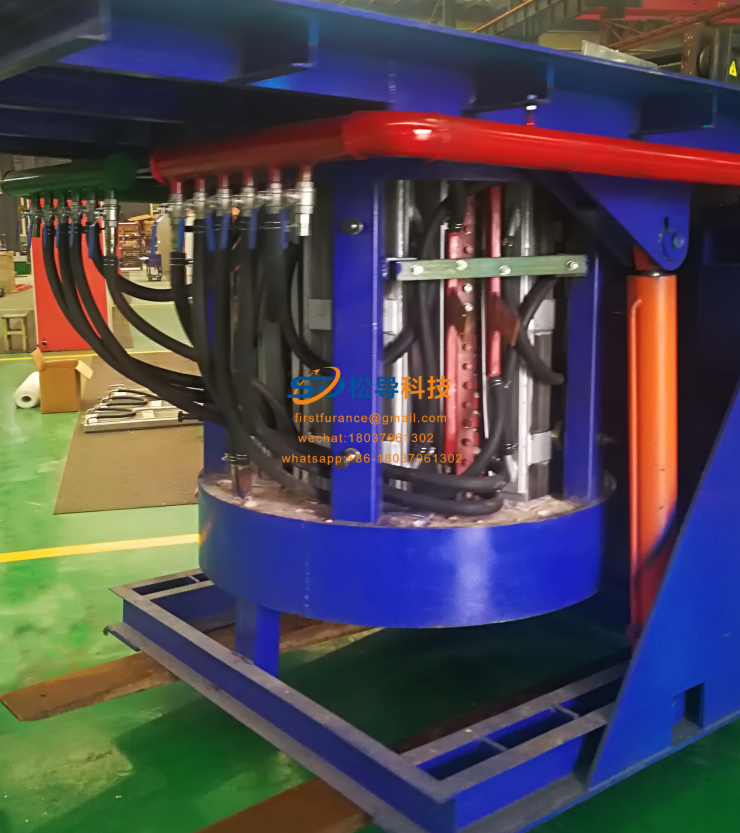Induction melting furnace ingredients
(1) Precautions for ingredients:
1) The batching calculation must be carried out correctly and the charge loading should be accurately weighed;
2) The size of the charge should be proportioned to achieve the purpose of good shape, fast loading and quickening;
3) All kinds of charge should be used according to the quality requirements of steel and the melting method;
4) The ingredients of the ingredients should meet the process requirements;
5) The charge of the charge must ensure that the steel ingot can be filled, and each steel has a specified amount of molten steel to prevent excessive short or surplus steel.
(2) Ingredients requirements: According to different melting methods, it can be divided into oxidation method, return oxygen blowing method and non-oxidation method. The non-oxidizing ingredients were used in the study.
When oxidizing by non-oxidation method, the charge should be composed of clean rust, dry steel material return material, return material similar to this steel type, carbon scrap steel and cutting head. The P in the charge should be guaranteed to be 0.005% or less lower than the finished product specification; the carbon is 0.03%-0.06% lower than the finished product specification; the alloying elements should be close to the middle and lower limits of the finished product specification. Usually the comprehensive yield of charge is calculated at 98%.
(3) Calculation of ingredients
The first step: determine the amount of steel:
Steel output = (steel ingot weight × steel ingot count + residual weight)
The residual weight is about 0.5%-1.0% of the steel output (the upper limit of the furnace capacity is small)
Step 2: Calculate the charge loading:
Charge loading = steel output / steel material comprehensive yield - ∑ addition of ferroalloy
Adding iron alloy amount = steel output amount × (control content - furnace content) / (iron alloy composition × yield)
The third step: calculate the amount of various charge materials
Various charge distribution = loading amount × ratio of various materials
[Example] The chemical composition of H13 steel is C: 0.32 - 0.45%; Si: 0.80 - 1.20%; Mn: 0.20 - 0.50%; Cr: 4.75 - - 5.50%; Mo: 1.10 - 1.75%; V: 0.80 - 1.2 %, now consider using a cutting head (C% ≈ 0.20%, Mn% ≈ 0.5%) plus alloy with 750Kg medium frequency ingot, high carbon chromium containing C% = 8%, Cr% = 58%, low carbon chromium containing C %=0.18%, Cr%=63% (the specific alloy composition is based on the purchased alloy), and the calculation is as follows:
Total loading = steel output / steel billet comprehensive yield = 750kg ~ 754kg / 98% ≈ 765kg ~ 770kg
Control composition of H13: C%=0.4, Si%=0.9%, Mn%=0.4, Cr%=5.0%, Mo%=1.15%, V%=0.85%
Alloy addition amount = total loading amount × (control content - furnace content) / (iron alloy composition × yield)
High carbon chromium addition amount = 770 × (0.4% - 0.2%) / (8% × 80%) ≈ 24KG
Low carbon chromium addition amount = (770 × 5.0% - 24 × 61%) / (60% × 95%) ≈ 42KG
Si iron addition amount = 770 × (0.9% - 0) / (73% × 95%) ≈ 10KG
Ferric iron addition amount = 770 × (1.15% - 0) / (63% × 98%) ≈ 14KG
Ferric iron addition amount = 770 × (0.85% - 0) / (55% × 98%) ≈ 12KG
Cutting head addition amount = 770-24-42-10-14-12=668KG
By calculation, the composition of the charge is: 668kg of cut head, 10kg of ferrosilicon, 26.6kg of high carbon chromium, 37.4kg of low carbon chromium, 14kg of ferromolybdenum and 12kg of ferrovanadium.
2 induction melting furnace. Loading
(1) Loading method: manual charging and overhead assistance are adopted.


